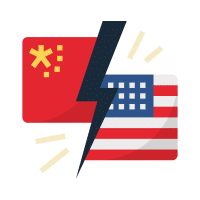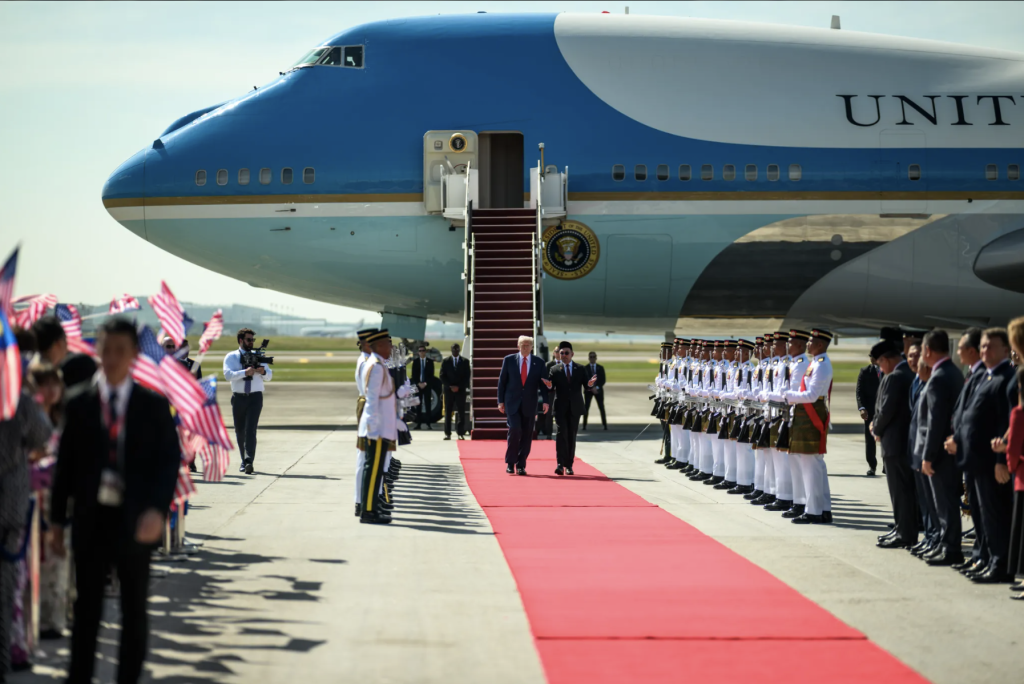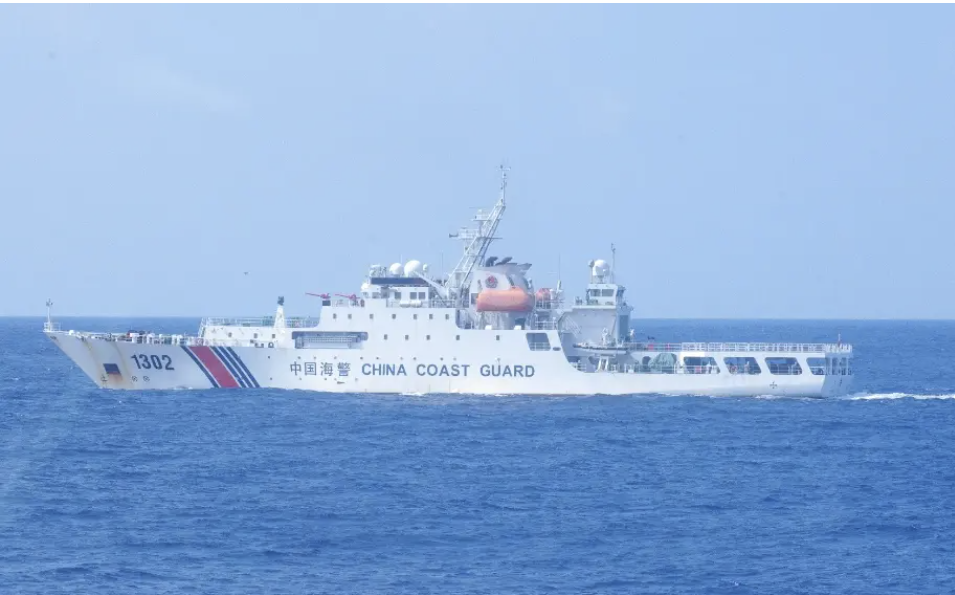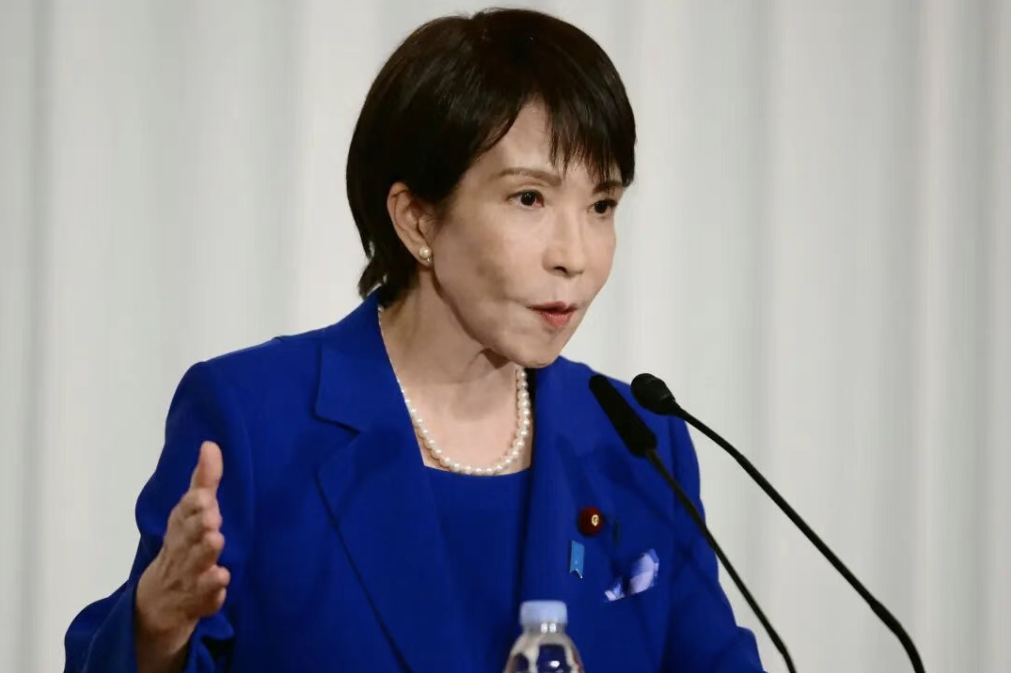Socialism’s Trillion Dollar Chinese Characteristic w/ Zoe Liu
- Interviews
 Henry O'Connor
Henry O'Connor- 04/10/2025
- 0

Zongyuan Zoe Liu is the Maurice R. Greenberg Senior Fellow for China Studies at the Council on Foreign Relations in New York. Her most recent book, Sovereign Funds: How the Communist Party of China Finances its Global Ambitions is an in-depth account of the emergence of China’s sovereign wealth funds and their transformative impact on global markets. Her book details China’s financial statecraft and its sovereign funds, state-owned investment funds traditionally financed by abundant natural resource exports. China’s sovereign funds, however, are curiously funded by leveraging its own foreign exchange reserves. Her other work focuses on international political economy, global financial markets, critical minerals, emerging markets, energy policy, and East Asia-Middle East relations.
Henry O’Connor: Tell me a little bit about where the idea came from to write your book. Why did you choose the title Sovereign Funds: How the Communist Party of China Finances its Global Ambition?
Zongyuan Zoe Liu: When I started at Johns Hopkins, I wanted to figure out under what circumstances countries choose to build pipelines versus acquiring tankers, but when I stumbled upon sovereign wealth funds, I became more curious as to how resource exporting countries manage their resources. I studied Norway and sovereign wealth funds in Kuwait, UAE, and Saudi Arabia. In this whole cluster, I found that China also has a sovereign wealth fund, despite being the world’s largest energy-importing country. I knew that scholars had been arguing that China has a wealth fund because of its large foreign exchange reserves, but it still didn’t make sense to me, because Japan, the second-largest foreign exchange reserve-holding country, explicitly rejected the idea of using foreign exchange reserves to establish a wealth fund. In my doctoral thesis, I did a comparative analysis of how China and Japan managed their reserves and at what junctures the Chinese government established its sovereign wealth funds. When I titled it ‘Sovereign Funds’, I was explicitly trying to show that Chinese sovereign funds are different from the conventional understanding of what a sovereign wealth fund is.
HO: How do you evaluate that decision by Japan to not start the fund? Are China’s circumstances different than that of other countries?
ZZL: Japan, while not having an explicit sovereign fund, still has government-owned investment institutions that ultimately draw their capital from foreign exchange reserves, something shared with China’s funds. I have had the opportunity to talk to some Japanese scholars and officials, and people seem to agree with me that it’s interesting to frame the Japan Bank for International Cooperation as a wealth fund. It originally was restructured from an aid agency into an investment institution using foreign exchange reserves much like China.
HO: Do you think Trump’s Sovereign Wealth Fund will be funded similarly or function in the same way as either of the Chinese or Japanese examples? Do you have a sense of its purpose?
ZZL: It will be largely dependent upon how President Trump views the fund and what kind of goal he wants the fund to achieve, as well as who manages it. Funds often have a mandate or a legal obligation to something, which is something I haven’t seen yet. In terms of the source of money, President Trump has said that tariff revenue, our natural resources, or bonds could be used to fund an American sovereign wealth fund. This might be quite a mixed source of revenue, and if it involves American government-issued bonds, might then function like the China Investment Corporation. The Chinese government also issues bonds to purchase foreign exchange reserves from the People’s Bank of China, China’s central bank. But this process involves the government basically expanding its balance sheet to take on new debt. This process is known as leveraging, which is why I called them Chinese Sovereign Leveraged Funds. They are different from the Norwegian Sovereign Fund or the Kuwaiti Investment Authority or Abu Dhabi Investment Authority, or for that matter PIF, Saudi Arabia’s Public Investment Fund. When these other funds were first created, the funding sources were purely from the monetization of natural resources.
HO: Do you think the goals of an American Sovereign Wealth Fund align with Trump’s desire to make the United States more of an export focused economy? What other sectors could it invest in?
ZZL: I’m not saying that it is impossible but just think about America’s economic structure. America’s current economy exports a great deal of services, patents, licensing, legal services, and education to the rest of the world. If the goal of the sovereign wealth fund is to boost America’s export of manufactured goods, then that would require the fund to invest in America to build more factories. But that’s not necessarily the way I think would maximize America’s economic interest simply because we have a lot of college graduates every year. Do they want to work in a factory as a blue-collar worker? Probably not. Even if the fund invests in American manufacturing, it may not necessarily achieve the desired goal of boosting manufactured goods exports. But if the fund is to invest in high tech, there are already a lot of private funds going into the technological innovation R&D space. So, I’m not exactly sure if this fund itself is necessary.
HO: I’m curious about two entities that you discussed in your book: the CIC, the Chinese Investment Corporation, and the Central Huijin. Can you expand on what those two institutions are?
ZZL: Central Huijin was created in the early 2000s, around 2003, with the goal of addressing China’s looming banking crisis. At that time, major Chinese state-owned banks were crippled by non-performing loans from state-owned sectors leftover from the legacy of the planned economy. So, to address the non-performing loans, the People’s Bank of China and the Ministry of Finance reached an agreement. While the Ministry of Finance had ownership of the banks, China had the foreign exchange reserves. So, the People’s Bank of China allocated a part of China’s foreign exchange reserves to establish Central Huijin and use it as a policy vehicle to recapitalize and save those banks. The process was so successful that the world’s largest banks are now Chinese banks. Now that its original purpose is fulfilled, Central Huijin has gone on to restructure China’s brokerage firms to recapitalize the China Development Bank too. It has played an important role in stabilizing China’s stock market over the years, and I would even call it “shareholder in chief” as it has a majority share across basically every single major Chinese financial institution, including China’s insurance companies.
The CIC, or Chinese Investment Corporation, was created in 2007 when China had accumulated foreign exchange reserves rapidly since joining the World Trade Organization in December of 2001. Unlike the Central Huijin which was created because of a looming domestic crisis, CIC was created to optimize its foreign exchange reserve management. Conventional ideas, at least at the time, said that they should invest most of their foreign exchange reserves in U.S. treasuries as a safe asset to create a buffer for balance of payment purposes. But in the context of China, people were saying well, if you invest in U.S. treasuries, then it basically misses out on other more lucrative opportunities. In this context, China was saying it could use its foreign exchange reserves to support overseas resource acquisition to meet China’s economic growth needs. In this context, the CIC was created.
HO: Do you see Central Huijin playing the “shareholder in chief” role in foreign corporations much like it does for domestic ones? How does this interact with state economic and national security interests?
ZZL: Sovereign funds investment can be the majority shareholder, but they are also a long-term institutional investor, meaning they put their money in for the long run rather than for the short term. Even if sovereign funds say that they want to be a silent partner in the investment, i.e., they don’t want to participate in the day-to-day management of a company, that does not necessarily mean they will have little influence. Although we haven’t seen a concrete case where Chinese sovereign funds or Norwegian sovereign funds for that matter exercise their coercive power, their presence is a formidable force to align companies’ incentives with those of the sovereign funds, especially if they want to maintain their long-term state-backed investors.
We do however see that CIC investments are quite closely aligned with Chinese government policy goals. It invested a lot in overseas resources when China’s resource demand was high, and it has also expanded into semiconductor companies and supply chain technology. There is nothing wrong with sovereign funds aligning their investment goals with the national agenda, but the extent of this mercantilism with that negative connotation is still a subject of debate.
HO: Does Chinese capital from their export surplus act similarly to those God-given resources that fund all these other sovereign wealth funds?
ZZL: China’s sovereign fund source revenue comes from manufactured goods exports, meaning the hard work of the Chinese people, whereas God-given resources like natural resources, oil, gas, or other types of mineral resources are not manufactured. I remember talking to a cab driver back when I was doing field research in China. I told him I wanted to go to the Poly Plaza, where the CIC is headquartered. and my cab driver asked me:
“Why do you want to go there?”
I said: “I’m going there for a meeting.”
And he said: “Oh, are you aware that they lost a lot of money during the global financial crisis? I’m not sure if we have fully recovered, they wasted my money!”
I find it interesting that the Beijing cab driver felt a sense of ownership. I guess it reflects the fact that people have a sense of ownership or pride in China’s exchange reserves, especially if that reserve comes from the accumulation of export manufacturing revenue and trade rather than just natural resources.
HO: Does China see its economic investment through its funds as part of international aid?
ZZL: That’s not aid. A grant is something that you give for free without the expectation of paying it back. Loans are given in return for interest payment or collateral. Sovereign funds work differently than aid, right? They are risk-bearing investments.
HO: How exposed is the CIC to the American Market?
ZZL: The CIC’s international portfolio is very much exposed to the U.S. market, but the majority of its assets are held domestically under Central Huijin. In 2017, during Trump’s first term, he went to China and one of his take-home achievements was a CIC-Goldman Sachs joint investment fund for the United States domestic market. Furthermore, when Trump signed his America First Investment Policy on February 21st of this year, he included specific terms to encourage passive Chinese investment. Depending on how people define passive, whether through a joint venture fund or a U.S. investment institution, the source of the money could still be from China, which would include the CIC.
HO: Do you think U.S.-China financial ties will grow, or do you think CIC might decide to divest from the American stock market and look elsewhere?
ZZL: From the CIC’s point of view, they want exposure to the American market because it is the largest financial capital market. On the other hand, there is a pull factor from inside China. There is an undercurrent of trade decoupling not only in part due to the Chinese government asking institutional investors to invest in China’s domestic industrial development, but also because Xi Jinping wants Chinese capital to support Chinese science and technology development. Trade tensions further strengthen that mentality which then restricts American capital investing in Chinese high-tech development from quantum computing to biotech, providing another push factor towards domestic markets. That being said, fund managers still want to have a geographic and asset class diverse fund with exposure to different business cycles.
HO: What is the purpose of these funds other than just adding to balance sheets? How much money are they really managing?
ZZL: I think the CIC’s assets are over $1.2 trillion right now which makes it at one point the largest fund in the world during COVID-19, but its market performance has since deteriorated. This is in addition to China’s $3 trillion in foreign exchange reserves and foreign exchange assets managed by the State Administration of Foreign Exchange. It’s quite a lot. Collectively you can imagine the foreign exchange reserves to be about the size of the UK’s GDP. Including China’s shadow (unofficial) reserves, the total is far larger than the UK’s GDP. This money can be a force for exercising financial or economic statecraft. For example, they can invest as support and divest to show dissatisfaction with a company’s performance or actions. They can support domestic industrial development and invest in foreign companies to get access to desired technologies or other assets they don’t already have. It’s certainly an economic power, but also a powerful political one.
HO: Does the CIC work in concert with or support other Chinese initiatives like the BRI?
ZZL: Back in 2016 and ‘17, I interviewed many people at the CIC who told me no. They said that they are independent and don’t work with the government and do not invest alongside government policy. In subsequent years, Tu Guangshao, the current president of the CIC expressed interest in setting up a BRI investment fund and if you look at what the CIC has already invested and supported, it is very much in line with the BRI’s existing projects.
HO: How has COVID-19 affected these funds? Were they able to respond to rapidly changing conditions?
ZZL: I honestly think COVID-19 is not the biggest shock for China. I would say U.S.-China tensions are bigger in part because their portfolio is extremely exposed to the U.S. market. They want to invest in U.S. companies in sectors from tech to natural resources, but broadly speaking, these funds in China, Norway, and Saudi Arabia are rainy-day funds to support domestic needs in times of economic stress. For China, it was an effective tool to absorb economic shock and provide a buffer for the national economy.
HO: Where do you see China’s economy going in the next few years? What challenges does it still face?
ZZL: China’s economy over the course of 2024 still suffered a lot of chronic structural challenges, even if it has stabilized a bit compared with immediately after COVID-19. The Chinese government and Xi Jinping himself have recently been meeting with Chinese private entrepreneurs to restore public confidence in the private sector, but to what extent the government can restore policy credibility is still a big unknown in the whole process. China’s sovereign leveraged funds can play a big role in stabilizing the stock market and have played a big role in that before, but they can also provide patient capital to support China’s R&D development. China’s economy is very much in transition, especially when they have some sectors that face excess capacity and other sectors that are booming. Sovereign funds can provide long-term capital to support the booming sector while providing stabilizing capital for the rest.
Henry O’Connor is an intern at The Carter Center’s China Focus and a recent graduate of Georgia Tech.
The views expressed in this article represent those of the author(s) and not those of The Carter Center.







